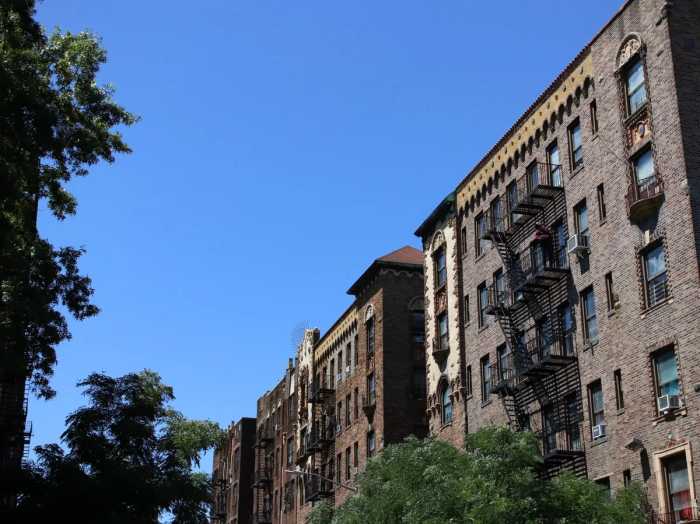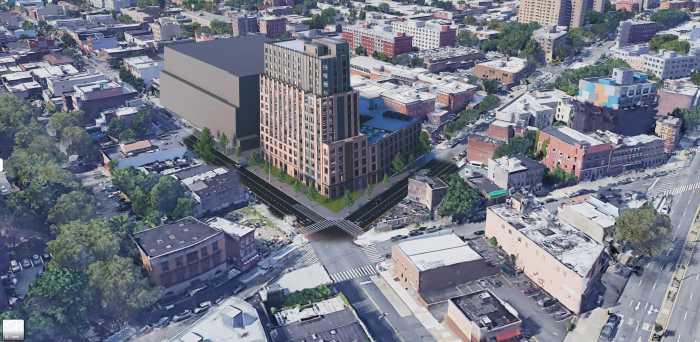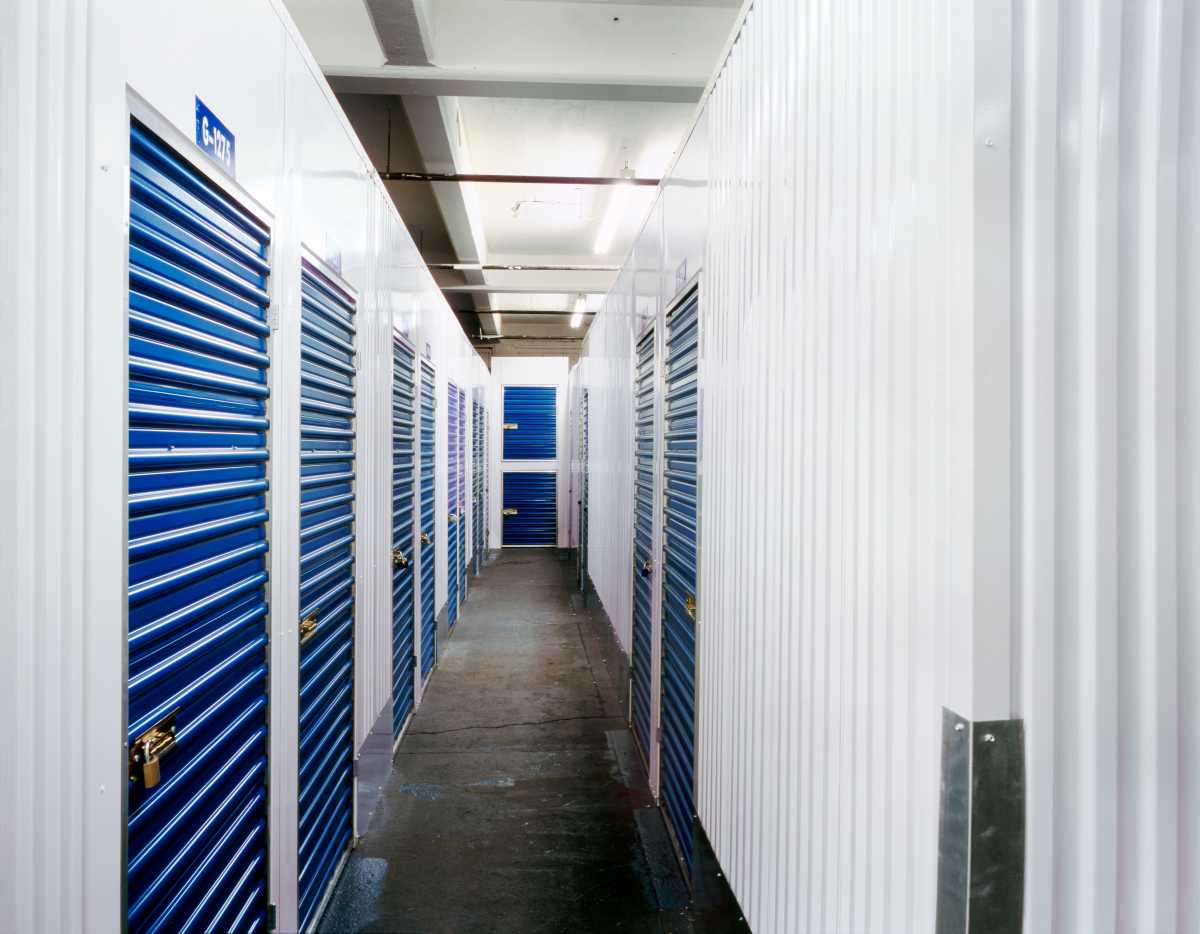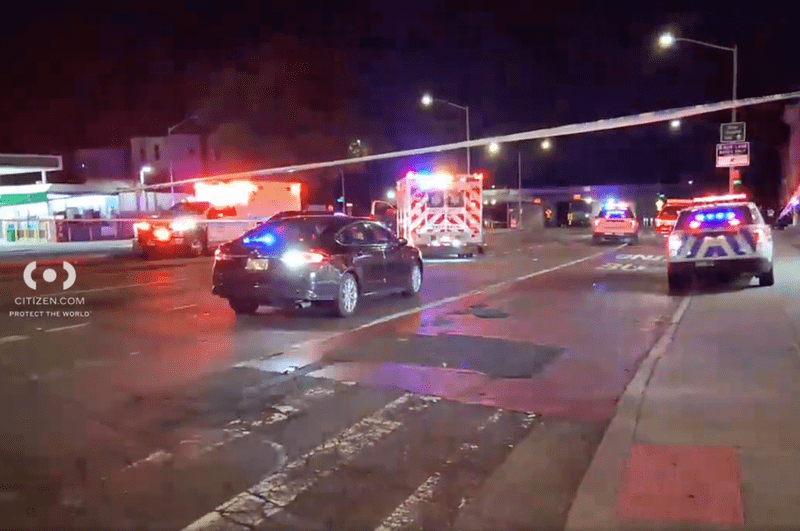An economic analysis released this week blasted deeloper Bruce Ratner’s
Atlantic Yards arena and high-rise plan as a money loser that would cost
the state and city more than half-a-billion dollars.
“Make no mistake, this project from Forest City Ratner will be using
taxpayer money, and loads of it,” said Gustav Peebles, of Fort Greene,
a Columbia University researcher who co-authored the report with Jung
Kim, an urban planner.
Peebles said he felt compelled to undertake the study after a sports economist
commissioned by Ratner claimed the $2.5 billion Atlantic Yards project
would put $800 million into city and state coffers.
The Peebles and Kim report concludes that the project will be a net loss
to taxpayers — to the tune of $506 million.
An anthropologist who studies economic history and is a member of Develop–Don’t
Destroy Brooklyn, a group opposed to the Prospect Heights project, Peebles
this week charged sports economist Andrew Zimbalist based his Ratner-commissioned
Atlantic Yards report on faulty assumptions and “misleading”
figures.
“By reanalyzing the data and the assumptions, we come to much more
negative conclusions regarding the impact of the entire 17 high-rise and
arena Brooklyn Atlantic Yards project on our delicate city and state finances,”
the report reads.
In addition to their independent analysis, Peebles said that he and Kim
consulted independent think tanks, professors and non-profits for their
study.
Ratner purchased the New Jersey Nets this year and, pending approval of
the NBA, plans to move them to Brooklyn. He has maintained that the project
would use almost no public money because it would be financed largely
by the tax revenue it would generate.
But even Zimbalist, in his analysis, estimated that Atlantic Yards would
cost taxpayers at $449 million. Pressed by a councilwoman at a public
hearing the day the Zimbalist study was released in May, Forest City Ratner
Vice President James Stuckey acknowledged that the public’s price
tag for Atlantic Yards would be in the hundreds of millions.
A Forest City Ratner spokesman declined to comment for this article.
In addition to the Frank Gehry-designed arena, the project would include
17 towers — reaching as tall as 620 feet — with more than 2
million square feet of commercial space and 4,500 units of housing to
be built in the future. The development site is bounded by Dean Street
and Flatbush, Atlantic and Vanderbilt avenues.
As part of the sweeping plan Ratner, principal owner of the Forest City
Ratner development company, seeks to acquire 11-acres of privately owned
land and development rights over the Metropolitan Transportation Authority’s
Long Island Rail Road storage yards on the site.
At the press conference Monday, Peebles asked why the public should subsidize
housing where, according to Zimbalist’s report, residents will have
an average annual income of $80,000 to $90,000.
Peebles also questioned Zimbalist’s estimates of office vacancy rates
in Downtown Brooklyn and the economist’s assumption that the Continental
Airlines Arena, the Nets’ current home, in Newark, N.J., would close
once the team left.
That assumption also drew a sharp rebuke from the head of the New Jersey
Sports & Exposition Authority, the entity that controls the arena.
The authority’s president and CEO, George Zoffinger, said Continental
Airlines Arena wasn’t going anywhere.
“If the financial plan for the proposed Brooklyn Arena depends on
the closing of the Continental Airlines Arena, then they better redo their
math,” Zoffinger said. “Make no mistake, we will continue to
be open for business.”
Zoffinger said he would install a half-house curtain to allow the arena
to host smaller events and insisted that the arena would be able to book
an event for every Nets game lost to Brooklyn.
Zimbalist, a professor at Smith College who has written several books
criticizing other arena and stadium projects, called the Peebles and Kim
report “sloppy and misleading.”
“I’m not willing to back off anything I’ve said in my report,”
Zimbalist said.
“To say I’ve underestimated police costs, they cite Yankee Stadium.
They should be looking at Madison Square Garden,” said Zimbalist,
explaining that the midtown basketball arena, home to the New York Knicks,
is closer in size and has more similar surroundings to the proposed Nets
arena than the 60,000-seat baseball stadium.
In their study, Peebles and Kim also criticize Zimbalist for underestimating
public service costs associated with the Ratner development including
public schools, police, fire, sanitation, public libraries and parks.
Zimbalist was quick to point out that he does not know if the arena is
an economic gain.
“I’m not arguing that the arena is a plus fiscally,” said
Zimbalist. “I don’t know if it’s a plus or a minus, but
the entire project is a plus
fiscally.”
Brendan O’Flaherty, an economics professor at Columbia University,
also slammed Zimbalist this week saying the economist was “only arguing
that any commercial and housing project makes money for the city,”
when all such projects turn profits for the city.
He called the Peebles and Kim report “at least as plausible and maybe
more plausible than the Zimbalist numbers.”





















